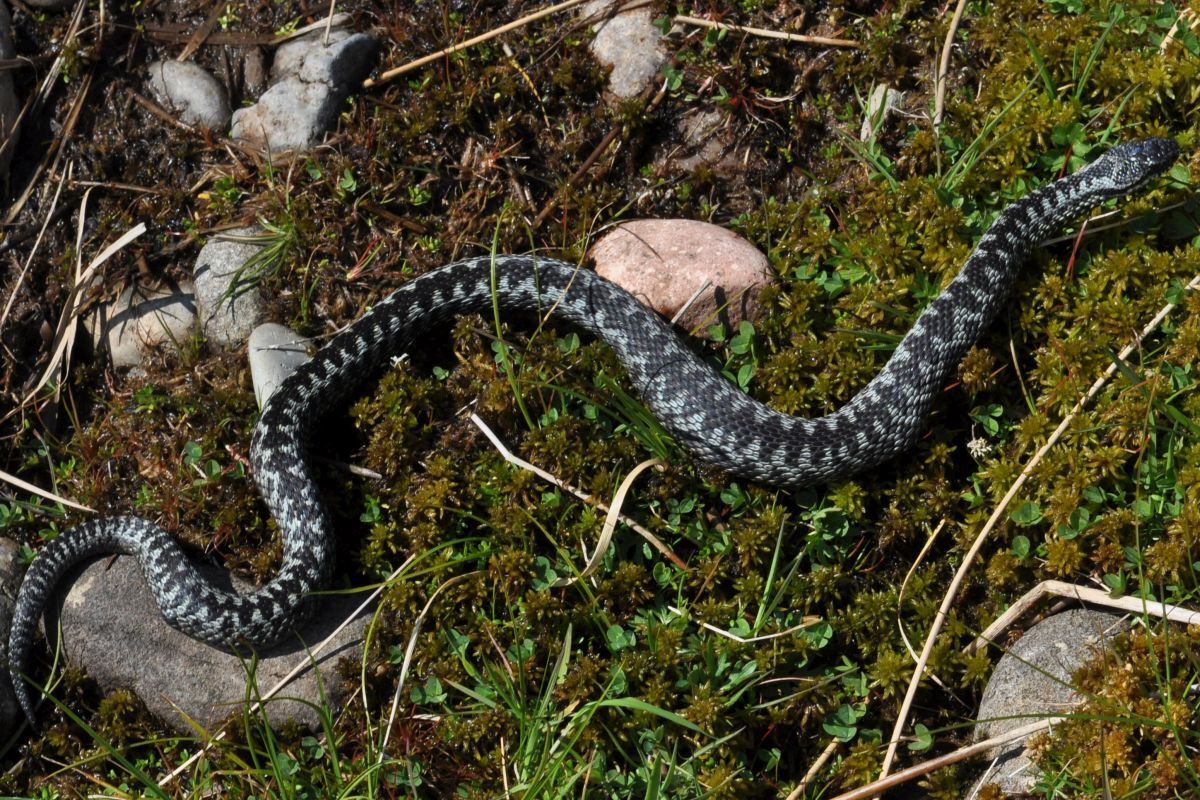Postscript to the Adder family
It used to be said that if you heard the cuckoo and saw an adder you would know that spring had truly arrived.
One year not long ago the cuckoo was heard near Kingairloch House on Friday April 17 – five days earlier than usual – I didn’t hear her (always referred to as female in the Highlands for some unknown reason) until the following day in the Crosaig wood on the north side of Loch Arienas.
Adders, or vipers as they used to be called, are not as common on the Morvern peninsula as they once were. Doubtless the chilly east winds of late have kept the few that remain from their usual haunts.
The island of Carna at the entrance to Loch Teacuis, Savary Glen and Corrie Ban are the only localities I hear of them but this is perhaps due to fewer stalkers and shepherds being on the ground on a daily basis to see and report them than any other reason.
The situation on Ardgour is slightly better. An ageing laird in these parts tells me every morning in the summer when he and his dog amble slowly past an old ruin in one of his glens, a large adder appears and hisses at them earning the name ‘Nicola’ after a certain politician who is purported not to see eye to eye with landowners.
Glen Scaddle, a parallel glen to the north, continues to hold them, as does nearby Cona Glen which has a placename suggesting they have been there for generations.
Mull, Jura and Ardnamurchan remain a haven for adders, but as I am unable to visit these places for the moment, I cannot say what their status is.
The late and greatly missed veteran St Kilda boat-captain Cubby Mackinnon, a native of Jura, formerly resident in Kilmelford and latterly exiled in the Uists, when I asked him the best time to visit Glengarrisdale on the NW side of Jura, replied, “Early April – the adders will be a lot less frisky then than they are in May”.
Snakes have had a bad press since Biblical times. From the one that led Eve astray causing the Almighty to say, “Because you did this, more cursed shall you be than all cattle and all the wild beasts, on your belly shall you crawl and dirt shall you eat all the days of your life”, to Nagini the snake that Harry had released from the zoo in Harry Potter and the Philosopher’s Stone, all have contributed to a legacy of mistrust, slyness, duplicity and evil.
Shakespeare wrote of a snake’s flicking tongue as a sting. The reference to being stung rather than bitten, comes from Proverbs 23:32 and can also be found in Ye Loyal MacDonalds, by Mary Maxwell Campbell (1812-1886), the Scottish songwriter, composer, and poet known chiefly for her well-known composition, Sons of Glencoe – “Ah! cruel as adders, ye stung them while sleeping, but vengeance shall track ye wherever ye go, our loved ones lie murdered; no sorrow nor weeping, shall ever awaken the Sons of Glencoe”.
I have a record from Glendale on Skye of a colony of no less than 35 adders being killed in one fell swope with pickaxes, pinch bars and shovels when they were found under a large boulder in March 1904 by a group of local Lovat Scouts preparing ground for the erection of a target.
In the same source it was said that sheep were seldom, or never injured by adders, their wool absorbing the virus.
Only one species of snake is to be found in Scotland and that is the adder. Despite appearances, the slow worm is actually a legless lizard, not a worm or a snake!
There are no snakes in Ireland. Grass snakes are fairly common in southern and central England. Scarcer north of the Midlands and absent from Scotland altogether. How they know when to slither away from the Scottish border beats me.
The adder is Britain’s only venomous reptile. The last death in the UK was in 1975, when a five-year-old boy was bitten in the Trossachs. Research published after this incident showed there had been only 14 deaths from adder bites in the previous 100 years. Researchers found only one death between 1950 and 1972 in England and Wales, but pointed out that there were 61 deaths from bee or wasp stings in the same period.
According to NHS advice, adder bite symptoms [like over-indulgence] include swelling, vomiting, nausea and dizziness and, in some cases, the only treatment required is observation in hospital.

Someone who had been bitten told me it was like having a sudden bout of flu or Covid. The treatment in the wild is to apply a tourniquet above the bite and to lie still for a while to prevent the venom travelling through an artery until a surgery or a hospital is reached. In most cases it is the shock of knowing one has been bitten that creates most of the problems. Bad reactions are rare.
The effects of a bite vary a great deal. This depends on the size of the snake and the volume of venom used and, indeed, the age and general health of the victim. As with insect bites, alcohol in quantity and bee stings, some people have a more violent reaction than others. If the snake has killed that day the defensive bite is likely to be ‘dry’ with little or no poison injected through the venom gland along the venom duct and down through a pair of hollow fangs.
Man’s natural instinct on coming across an adder, especially if there is a dog in the vicinity is to kill it, which is unfortunate because, like most wild creatures, they, too, have lives to give and to guard – it is we who are the intruders not them. All British snakes are now protected by law.
Generally, snakes in the UK will move away on sensing the vibration of a walker except if they are suddenly disturbed sleeping in the warm sun after a hearty meal. Let’s be honest how many humans act any differently under the same circumstances?
Of all the many hours I have spent with adders on Jura, I was never bitten or worried about being in their presence other than on one occasion. The trick, where there are likely to be adders around, is to walk slowly and quietly, spotting them before they are aware of you.
On this occasion I failed to see a large male coiled up on a heap of dead bracken a few feet away which hissed loudly and struck the end of my walking stick with its fangs. If someone had asked me at any other time to demonstrate a vertical take-off, I would have said I couldn’t. Not so that day! Fortunately, I had left Pepper, my Jack Russell terrier, tied to the rubber dinghy on the shore otherwise he would have been ahead of me as usual and could well have been bitten; being so far from a vet’s surgery, that would have been the end of him.
Latest News
JOBS
Lead Engineer in a small food business - The Island Bakery
Sign up to our daily Newsletter
Permission Statement
Yes! I would like to be sent emails from West Coast Today
I understand that my personal information will not be shared with any third parties, and will only be used to provide me with useful targeted articles as indicated.
I'm also aware that I can un-subscribe at any point either from each email notification or on My Account screen.
You may also like
Simple old stone walls
Super yachts in West Highland waters
Heroes and a hymn from across the Atlantic
Latest News
JOBS
Lead Engineer in a small food business - The Island Bakery















